Alzheimer’s
Alzheimer’s is a truly heartbreaking disease, robbing people of their memories until they don’t even recognize themselves or their loved ones. While the disease is incredibly common - affecting over 6 million people in the United States alone - scientists know very little about what causes the condition, or how it affects the brain.
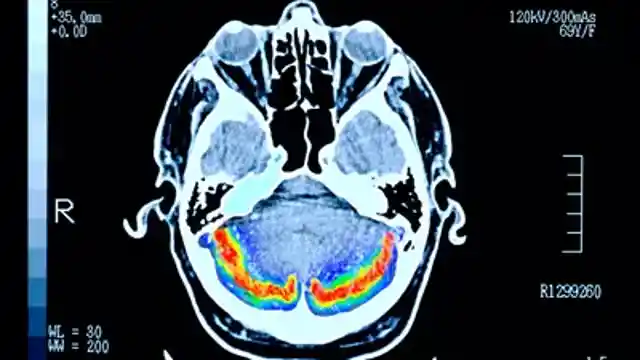
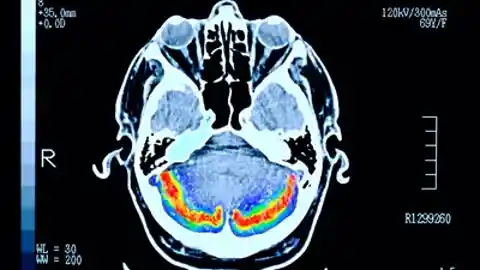
These gaps in scientific knowledge have so far made it impossible to design effective treatments, and - as of yet - there isn’t much that can be done once Alzheimer’s has been diagnosed. The good news is, it's one of the most researched and studied illnesses around.
The common cold
Every year, there are around one billion cases of the common cold in the United States. With numbers that high, you’d expect that scientists would have plenty of opportunity to learn everything there is to know about the prolific illness.


However, while it is known that up to 200 strains of virus can cause the common cold, there are still a lot of mysteries. These include whether or not people can catch the same strain twice, the risk factors that increase the likelihood of catching a cold and whether anything actually speeds up recovery.
Schizophrenia
While there is a lot of variation in the symptoms experienced by sufferers of schizophrenia, it’s considered one of the most debilitating mental illnesses. Common symptoms include delusions, paranoia, disorganized thinking and both audible and visual hallucinations.


Despite hundreds of studies, scientists still have no idea what causes schizophrenia, although they believe it occurs due to a combination of genetic and environmental factors. There is currently no cure for schizophrenia, but anti-psychotic medication can help sufferers manage their symptoms.
Chronic fatigue syndrome
As you can probably guess from the name, chronic fatigue syndrome is a condition characterized by extreme tiredness and chronic pain. The medical term for the syndrome is myalgic encephalomyelitis, but scientists know very little about the condition, and - for decades - it wasn’t even officially recognized as a real disorder.


While research has suggested that chronic fatigue syndrome is most likely to begin after an infectious disease like mono, experts don’t understand the mechanisms involved, which makes treating the debilitating disorder incredibly challenging. Pain management and energy conservation plans can help with functionality, however.
Leprosy
Leprosy is an ancient disease, with many historical texts from around the world mentioning the horrific affliction. The condition attacks the skin, nervous system and mucus membranes, eventually leads to numbness and paralysis, as well as telltale white lesions. For much of history, the disease was fatal.


While scientists have identified the strain of bacteria responsible for the disease, they still know precious little about how it’s transmitted and how it actually functions, and there still isn’t a reliable way of diagnosing leprosy. Fortunately, scientists have found effective treatments for the disease, bringing hope to the 200,000 patients affected each year.
AIDS
Acquired Immunodeficiency Syndrome - more commonly known as AIDS - is estimated to have killed at least 40 million people since the disease first became prevalent in the 1980s. Although AIDS used to be a death sentence, scientists have now learned exactly how the disease works.
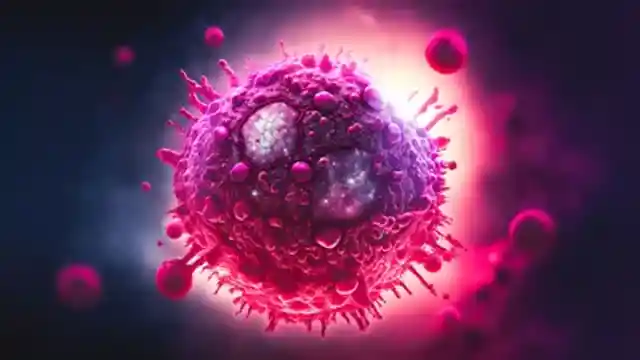

This has allowed pharmacologists to develop highly effective drugs which mean people diagnosed with AIDS can live long, healthy lives. However, there is still much that scientists don’t understand, which has prevented them from developing a cure or effective vaccine. It's also not known how exactly it first made the leap from apes to humans.
Fibromyalgia
While fibromyalgia can cause fatigue, depression and cognitive impairment, its main symptom is widespread, unexplained pain. This pain doesn’t appear to have a physical cause, and it’s generally resistant to pain-relief medication, especially when over-the-counter pain management options have been used for long periods of time.


Numerous studies have investigated fibromyalgia, but - despite a few promising leads - researchers still don’t know what causes it. While fibromyalgia doesn’t have a cure, mindfulness meditation has been shown to improve its symptoms, improving quality of life for those suffering with the mysterious condition.
Celiac disease
Sufferers of celiac disease experience incredibly violent symptoms - including diarrhea, vomiting, extreme pain and even seizures - if they eat any foods containing gluten. Research has discovered that celiac is an autoimmune disorder, with the body’s defense mechanisms attacking the digestive tract.


The condition can develop at any time in otherwise healthy individuals, a fact which has left scientists scratching their heads. There also aren’t any effective treatment options for the disease, with sufferers having to carefully monitor their diets to ensure they aren’t exposed to gluten.
Avian flu
Although the avian flu outbreak of 2015 proved far less deadly than experts feared, there are still immense concerns about the disease. Designated as H5N1, avian flu seems to be able to mutate easily, allowing it to jump from birds to humans.


Scientists aren’t exactly sure why it is able to do this, but they know it’s concerning, and avian flu is actively monitored. Minor outbreaks in humans are also relatively common, furthering alarm. Experts are also divided over avian flu’s potential for lethality, with some worrying that a major outbreak could claim hundreds of millions of lives.
Depression
Despite the prevalence of depression - which affects an estimated five percent of adults in the United States - scientific understanding of the condition is still sorely lacking. Researchers aren’t even sure if depression has mostly biological or psychological causes, although the general consensus is that it's probably a combination of both.


Further complicating the picture is the fact that some patients respond incredibly well to pharmacological treatments, while others report no effects at all. This has led scientists to explore alternative treatments, including meditation, talk therapy, physical exercise and even Electroconvulsive therapy.
Pica
Pica is an incredibly strange medical condition that causes sufferers to eat non-food items such as clay, paper and mud. The condition can occur alongside other mental health disorders, or it can spontaneously appear in otherwise-healthy individuals. Children are especially prone to the disease.


Pregnant women seem to be at an increased risk of developing pica, which has led scientists to speculate that it might be caused by certain vitamin and mineral deficiencies. This is just an educated guess, however, and the medical community has no definitive answer as to what causes the bizarre affliction.
Creutzfeldt-Jakob disease
Creutzfeldt-Jakob is a neurodegenerative disease which invariably proves fatal, with 70 percent of sufferers passing away within a year of diagnosis. The condition - which causes blindness, behavioral changes, hallucinations and eventually coma - is caused by prions, misfolded proteins which can be found in the central nervous systems of animals.


While scientists know that Creutzfeldt-Jakob can be transmitted through contaminated animal products, the disease can also develop spontaneously in humans, a fact which continues to puzzle experts. Research is ongoing however, and so hopes are high for an eventual explanation.
Leukemia
Leukemia is one of the most commonly diagnosed forms of cancer. The disease affects blood-forming tissues in the body, generally starting in bone marrow or the lymphatic system. While effective treatments for leukemia exist, scientists aren’t sure how it develops in the first place.
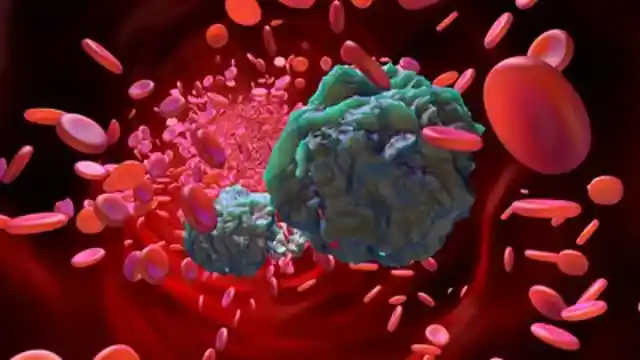
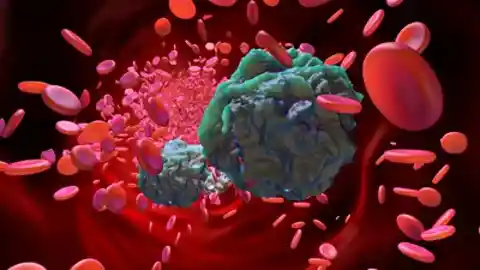
The fact that it’s one of the most prevalent types of cancer in children probably offers some clues as to the mechanisms involved, but - to date - researchers still haven’t been able to unravel the disease’s secrets. Thankfully, leukemia is now considered one of the more curable forms of cancer -
Addiction
While describing addiction as a disease was once controversial, the current consensus in the scientific community is that it should indeed be conceptualized as a brain disease. This is because it bears many of the hallmarks of more typical diseases, including genetic predisposition and the fact that it leads to detectable physical changes in the brain.


There is still a lot that isn’t known about addiction, however, which can make it incredibly difficult to treat. Currently, the most common treatments revolve around therapy and rehabilitation programs, although various clinical trials involving monitored psychedelic exposure have yielded promising results.
Behçet's disease
One of the main challenges researchers studying Behçet's disease face is the fact that the condition’s symptoms overlap significantly with a number of other illnesses. Sufferers of the disease experience headaches, stiff joints, blurred vision and ulcers, which normally appear around the mouth and genitals.


These symptoms tend to flare up for months at a time, and periods of remission can last for years. Scientists basically have no idea about the underlying cause of Behçet’s, meaning doctors are currently limited to only treating the symptoms.
Stone man syndrome
Fibrodysplasia ossificans progressiva - more commonly referred to as “stone man syndrome” - is a poorly understood disease which causes a person’s connective tissue to slowly turn into bone. Scientists are fairly certain that the condition is genetic, but beyond that they don’t really know what’s going on.


Most sufferers experience their first symptoms before the age of ten, and from that point on their muscles, ligaments and tendons inexorably turn into bone, severely restricting their movement and eventually killing them. Surgical treatments are not possible as they usually lead to an explosion of new bone growth, but anti-inflammatory medications can reduce pain.
Glandular fever
Glandular fever, medically known as infectious mononucleosis, is an incredibly common illness, and around 95 percent of people will have contracted it by the time they reach adulthood. However, its commonality does not mean that it is harmless or not a big deal.


The disease’s symptoms - which tend to be more severe in older patients - include lethargy, fever, sore throat and visibly swollen glands in the neck, armpit or groin. While glandular fever itself is rarely fatal, it does seem to slightly increase the risk of developing cancers of the lymphatic system, a fact which continues to puzzle scientists.
Irritable bowel syndrome
Irritable bowel syndrome is so poorly understood that there isn’t even consensus in the scientific community about whether it is a real condition. However, while it was once dismissed by doctors, it’s being taken increasingly seriously as the number of sufferers increases.


IBS causes a range of gastrointestinal symptoms, including pain, diarrhea and bloating, and severe cases can be debilitating. Research has suggested that the condition might be caused by problems with the so-called “gut-brain axis,” but studies have yet to produce conclusive results.
Alice in Wonderland syndrome
Unfortunately, Alice in Wonderland syndrome isn’t nearly as exciting as it sounds. The condition is characterized by extreme migraines and bizarre hallucinations which distort body image, with sufferers often reporting that their head, hands and feet all seem dramatically enlarged.


Alice in Wonderland syndrome is poorly understood by scientists, which means that no effective treatment exists. Currently, doctors aim to manage the condition with painkillers and lifestyle changes, particularly diets designed to reduce migraines. Despite sufferers commonly experiencing hallucinations, antipsychotics have proved an ineffective treatment.
Appendicitis
Contrary to popular belief, the appendix isn’t actually a useless organ, and scientists think it might play roles in both digestion and immune health. Occasionally though, the appendix can become severely inflamed, a condition known as appendicitis. This often happens in childhood.


Symptoms include pain, vomiting and decreased appetite, and - in severe cases - the appendix can burst, leading to potentially fatal complications. While appendicitis is easily treated via surgical removal, researchers still aren’t exactly sure what causes the condition in the first place.
Hyperthyroidism
The thyroid is a butterfly-shaped gland that sits near the throat, and is responsible for producing an important hormone called thyroxine. Sometimes, however, the thyroid starts producing too much of this hormone, leading to a dangerous condition known as hyperthyroidism.


Symptoms include anxiety, restlessness and irritability, which often leads to the condition being misdiagnosed as a mental health condition. Fortunately, with a correct diagnosis, hyperthyroidism can be effectively managed with drugs. While the condition sometimes has an obvious causes - such as Graves’ disease - it can also occur for seemingly no reason at all.
Narcolepsy
Sufferers of narcolepsy experience excessive levels of sleepiness throughout the day, often accompanied by episodes of involuntary sleep. For obvious reasons, this can greatly interfere with school or work, which means that narcolepsy can often be an incredibly debilitating condition.


Clinically, narcolepsy is referred to as a hypothalamic disorder, reflecting scientists' belief that it’s likely caused by problems with the hypothalamus, a region of the brain responsible for maintaining homeostasis. However, despite a number of studies, the root cause of narcolepsy remains a mystery.
Multiple sclerosis
Affecting almost one million people in the United States, multiple sclerosis is a degenerative disease which results in damage to the myelin sheaths protecting nerves in the brain and spinal cord. Over time, this leads to symptoms including muscle weakness, coordination problems and cognitive impairment.


While these symptoms tend to come and go in the disease's early stages, as multiple sclerosis progresses the problems become more permanent and debilitating. Little is known about what causes the condition, which has thus far hampered efforts to develop effective treatments or cures.
Cataplexy
Cataplexy is characterized by sudden episodes of muscular weakness, which are normally brought on by intense emotions such as joy or terror. The severity of symptoms varies from case to case, with some patients only experiencing a mild relaxation of muscles, while others are rendered paralyzed.


Sufferers almost always remain fully conscious during these attacks. Cataplexy is strongly linked to narcolepsy, but it can also occur on its own, and - to date - no cause has been discovered. Thankfully, the system responsible for the attacks can be inhibited by antidepressants.
Hypothyroidism
In addition to secreting excess levels of thyroxine, the thyroid can also develop the opposite problem. This is known as hypothyroidism, and it causes symptoms including weight-gain, lethargy, intolerance to cold temperatures and depression. It can also lead to swelling of the neck.


There are a number of causes of hypothyroidism - including damage to the gland itself and tumors in the pituitary gland - but one of the most common causes seems to be iodine deficiencies. However, scientists aren’t exactly sure why this deficiency leads to the condition.
Lupus
Systemic lupus erythematosus - more commonly referred to simply as “lupus” - is an autoimmune disease which causes the body’s immune system to attack healthy tissues. Common symptoms of lupus include painfully swollen joints, enlarged lymph nodes, hair loss and fatigue.


Lupus can also cause sufferers to develop a bright red rash, which normally appears on the face and chest. Risk factors for developing lupus are believed to include genetics, vitamin D deficiency and certain infections, but the actual cause of the disease remains unknown.
Parkinson’s
Parkinson’s is a degenerative disease which affects the central nervous system, causing problems with movement, cognition and tremors, the latter of which is considered the telltale sign of the condition. These symptoms become progressively more severe over time, and no cure for Parkinson’s exists.


Studies have shown that the condition results from the death of cells in the substantia nigra, a region of the brain that produces dopamine. However, researchers still don’t understand what causes these cells to die in the first place, nor how to reverse the process.
Bell’s palsy
Bell’s Palsy is a condition which causes temporary paralysis on one side of the face. Symptoms - which can also include enhanced sensitivity to sound - usually come on over the course of 72 hours, and they can persist for several weeks, although they almost always resolve on their own.


While researchers have found that Bell’s palsy is the result of nerve disfunction, they’re completely stumped when it comes to the question of why it occurs in the first place. The condition has affected celebrities such as Justin Bieber and Katy Perry.
Exploding head syndrome
While it’s not quite as dramatic or as fatal as its name suggests, exploding head syndrome can still be incredibly distressing for sufferers. The condition is characterized by brief auditory hallucinations which typically either occur when falling asleep or waking up.


Patients normally describe the hallucinations as incredibly loud, and they can be intensely frightening. Researchers have investigated a number of possible causes, but all have ultimately been ruled out. Fortunately, exploding head syndrome tends to eventually resolve on its own.
Type 1 diabetes
Unlike type 2 diabetes - which is generally brought on by a combination of diet and lifestyle factors - type 1 diabetes is caused by the body’s immune system mistakenly attacking insulin-producing cells. Sufferers of the condition have to closely monitor their blood glucose levels, using insulin injections when necessary.


While scientists have identified the mechanisms responsible for type 1 diabetes, they still don’t know what actually causes the immune system to go rogue. Fortunately, although no cure exists, treatment can prevent many of the disease’s more serious complications from developing.
ADHD
Attention deficit hyperactivity disorder - or ADHD for short - is currently one of the most controversial topics in medicine. This is partly because it seems to be affecting children and adults in increasing numbers, and partly because it’s so poorly understood.


The symptoms of ADHD include inability to concentrate, hyperactivity, impulsivity and emotional outbursts, and scientists believe it’s caused by problems with the brain’s production of dopamine. However, this has yet to be conclusively confirmed, and there is a lot of debate about what ADHD actually is, as well as how it should be treated.
Brainerd diarrhea
Brainerd diarrhea is one of the most unfortunate conditions in existence, causing constant, watery diarrhea for months on end. It’s suspected that Brainerd diarrhea is caused by an infectious agent, but scientists have absolutely no idea what that agent might be.


There’s also no way of treating the condition, which can last years in particularly extreme cases. There have been a number of outbreaks of Brainerd diarrhea throughout history, and doctors have been limited to treating the secondary problems caused by the condition, with dehydration posing a particular risk.
Psoriasis
Psoriasis is an autoimmune disease which causes scaly patches to develop on the skin. These patches are often dry and itchy, and they can present in a range of colors. In addition to skin changes, psoriasis can affect the heart, and sufferers of the condition are at an elevated risk of heart attack.


Scientists believe that psoriasis is caused by a combination of genetic and environmental factors, but - despite many studies - it’s not well understood. Treatment options include topical creams and lifestyle changes, and there’s also evidence that exposure to sunlight can be beneficial.
Picardy sweat
In 1718, a strange infectious disease began to sweep through the French province of Picardy. The illness was soon dubbed the “Picardy sweat,” due to the fact it caused intense, spontaneous sweating in sufferers. Other symptoms included fever, rash and nosebleeds.


Up to 30 percent of the population of Picardy was affected, and the mortality rate was as high as 20 percent in some areas. To date, no one has been able to figure out what caused the disease, leading to fears that further outbreaks are possible.
Kawasaki disease
Mostly affecting children under five, Kawasaki disease causes blood vessels to become inflamed throughout the body, resulting in fever, rash and red eyes, as well as a telltale "strawberry tongue" which is the symptom that most often leads to diagnosis.


While the disease itself is rarely fatal, it is the leading cause of acquired heart disease in children, and complications can include aortic aneurysms and myocarditis (an inflammation of the heart). Despite extensive studies, scientists still haven’t been able to figure out what actually causes the disease, which was first described by Japanese pediatrician Tomisaku Kawasaki in 1967.
Nodding disease
Currently confined to a few African countries, nodding disease only affects children between the ages of five and 15. The disease gets its name from the seizures it causes, which often but not always result in a characteristic nodding motion.


In addition to these seizures, nodding disease also permanently stunts growth and results in severe cognitive impairment. The exact cause of the condition is unknown, but scientists suspect it might be linked to a type of parasitic worm which is found in the areas in which nodding disease is prevalent.
Reye syndrome
Reye syndrome is a brain disease which usually begins after recovery from a viral infection. The condition progresses incredibly rapidly, with symptoms including vomiting, seizures, personality changes and jaundice. Between 20 and 40 percent of cases end in death, and many of those that survive are left with permanent brain damage.


The cause of Reye syndrome is unknown, but - in children at least - it seems to be linked to the use of aspirin, with rates of the disease falling after doctors started advising against prescribing the painkiller to kids.
Interstitial cystitis
Symptoms of interstitial cystitis include an intense and persistent urge to urinate, pain during sex and general feelings of bladder discomfort. While the condition does occasionally affect men, it is overwhelmingly more common in women, though this might be because women are more commonly diagnosed with it.


Since the cause of interstitial cystitis is unknown, it is difficult to treat, and sufferers often experience depression and reduced quality of life. Onset normally occurs in middle age, and treatment revolves around making lifestyle changes like reducing stress and quitting smoking, which may or may not help.
Rheumatoid arthritis
With over one million Americans suffering from the disease, rheumatoid arthritis is one of the most common autoimmune disorders. The condition primarily affects the joints, resulting in pain, swelling and loss of mobility. Though people of any age can develop the illness, it most commonly presents in a person's 40s and 50s.


Rheumatoid arthritis is a progressive disease, meaning its symptoms get worse over time, although there are a number of drugs which can slow it down. Little is known about what causes the condition, but there seems to be a genetic component, with a family history of the disease increasing its likelihood by up to five times.
Hutchinson-Gilford Progeria Syndrome
An incredibly rare condition affecting around one in every four million people, Hutchinson-Gilford Progeria Syndrome - usually just referred to as “progeria” - causes incredibly rapid aging. The condition begins in childhood, and most sufferers die before the age of 15.


Since progeria is so rare, it’s incredibly difficult to research, meaning scientists understand little about the disorder. In 2020, a new drug was pioneered that can extend the lifespan of progeria sufferers, although they’re still likely to die in their early 20s.